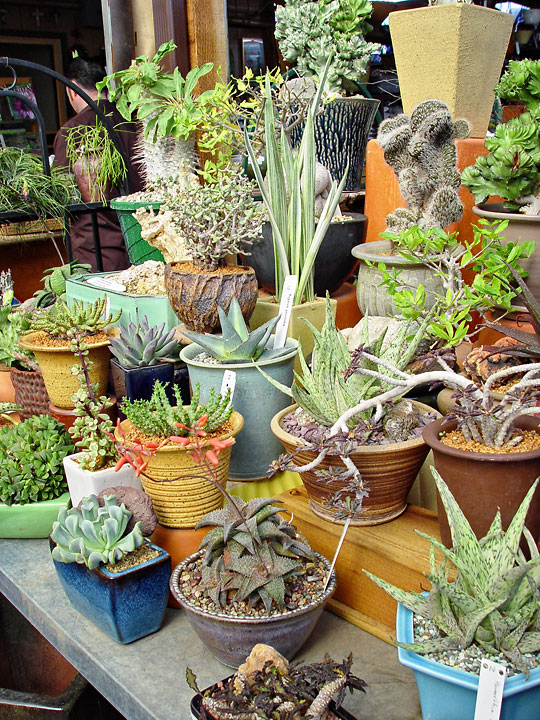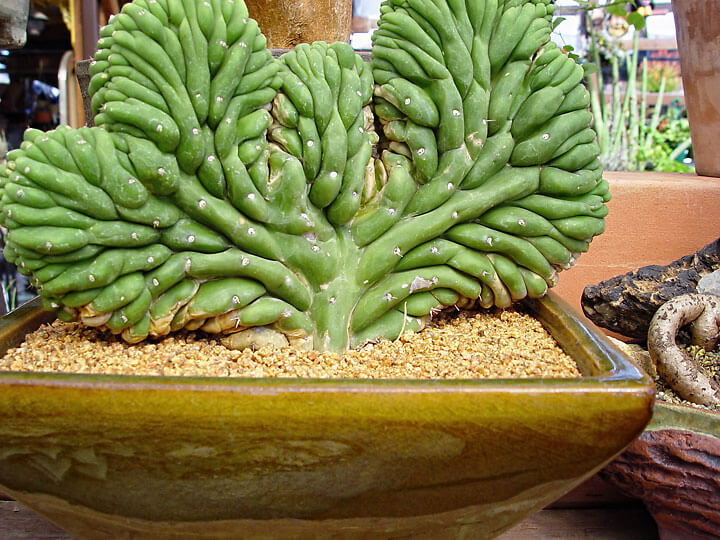
“Water applied must drain through the soil in fifteen seconds. If it fails to do so, the soil is too dense.” Such advice came to me decades ago from an old school nurseryman who specialized in cacti and succulents. Back then I thought this fifteen second law regarding fast-draining soil for succulents was ridiculous. After moving to the desert I learned what native cactus ground looks like. Water applied instantly vanishes into the soil. The nurseryman was right.
Today about half my collection of succulent plants are grown in small pots that come into an unheated south facing greenhouse for the winter. They are planted in Black Gold Cactus Mix, which drains within the fifteen second rule.
Soil is Everything
What many new succulent gardeners fail to understand is that, because cacti root differently, soil is everything. Standard plants go deep to catch ground moisture after the surface soil dries out. In the desert, cacti adapt to short periods of rainfall by spreading out shallow roots over a large area. These roots are capable of rapidly taking up water before it water drains through porous ground. This water is immediately stored in a succulent’s specialized tissues that hold it between widely spaced rain events. Shallow rooting is the reason why most cacti do best in low, wide pots, pans and bowls with large, open drain holes.
Cactus potting soil contains perlite, which looks like little white pieces of popcorn. While it is excellent for a root zone, it floats to the surface when I water. This and little bits of organic matter become entangled in the spines or settle in nooks and crannies of smooth surface skin. This is not only unsightly, it brings soil born bacteria in direct contact with the plant skin which may begin the rotting process.
To control these floaters, succulent aficionados apply a layer of fine gravel on top of the potting soil to keep it all in place when water is applied. White rock is popular for modern style containers with a more graphic look. I prefer washed gravel because it’s more naturalistic and blends with the rocks I find on walks to use as an accent stone. You can also use aquarium gravel for more unusual or brightly colored composition of succulent, pot and surface material.
Transplant Gently
Even the smallest damage to the skin of a plant can allow pathogens to enter and begin the process of internal cell damage which leads to softening rot. When transplanting cacti, I handle each plant carefully to avoid the slightest damage. Once removed from the original pot, I do not replant immediately but allow it to sit bare root in the open air for a few days. This lets any damaged roots or skin heal over or callus before repotting in new soil. Failing to do so brings soil pathogens into direct contact with a wound, which inevitably infects internal tissues.
When your soil is sufficiently well drained for cacti and gorgeous succulents, it becomes downright difficult to over water them. The warmer months of summer are their rapid growing season. During this growing season, water often, feed modestly, and above all, make sure you use Black Gold Cactus Mix to be sure it drains in about fifteen seconds.


